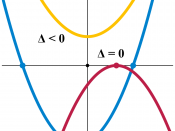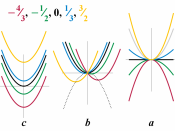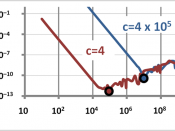Factoring method
WARNING: For the following lesson, you will need a number of vital accessories:
÷Pencil (most math teachers prefer this--you'd want to be able to erase, anyway)
÷Paper
÷Graphic calculator--TI-82 or better (it must be able to let you write programs and run them)
÷Knowledge of solving a quadratic equation, using the Quadratic Formula, or the Quadratic Formula program, or otherwise
÷You must currently be taking an algebra course, at least one semester into it (or you could use this as a for-your-information, for those of you that have already taken the course).
(plus, you'll want some algebra homework, involving really difficult polynomials, to apply this to)
If you are disqualified for any of these qualifications, it would be most advisable to cease your approach to this trick in mathematics until you have met these standards. Or, you can just try your best and see if you can figure it out.
So, having trouble factoring polynomials with x squared coefficients of more than one? Let's just say you can't find two numbers that added together equal a certain number, and multiplied together give you another specific number. First of all, apply the discriminate test--b2-4ac--to see if it indeed can be factored. If the square root of this value is not an integer (rather, if it is a decimal), it cannot be factored; it is a prime polynomial. However, if you get a whole number from this, then consider the following system of formulas (or equations, whichever sounds better for you):
x+y=z
xy=w
(NOTE: "Z" and "W" are variables that must be substituted with the correct values, depending on the polynomial you are factoring)
Remember, z is the x coefficient (or middle term) and w is the product of the x2 coefficient (or the first term) and...


